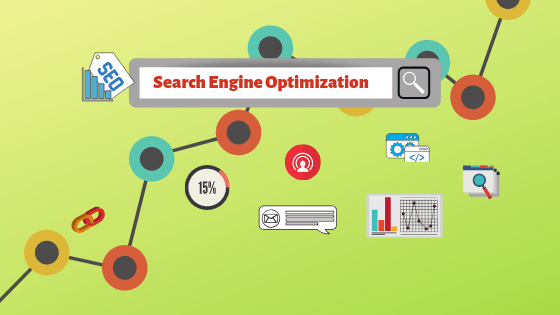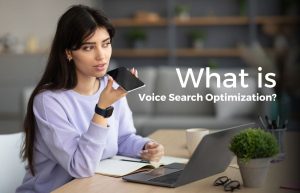We already know that search engine optimization (SEO) is a powerful tool for content marketers. As Andy Betts, CMO Advisor and Content Evangelist from BrightEdge, said “SEO, alone, is not enough to guarantee success. Content marketing, alone, is not enough to guarantee success. Together, they build a better customer experience. There’s a massive opportunity for people who are connecting the dots.”
Meaning, while SEO and content marketing can each stand on its own, the best and most effective digital marketing strategies contain both. Here’s what you need to know about content campaign optimization.
Content Campaign Optimization: Essential Things to Keep in Mind
Let us begin with the basic on-page SEO elements. After all, they are the ones that are often being overlooked.
#1 Title Tags
Remember that title tags are the first thing your customers notice. It appears in Google search results and on social media networks when open graph tags are not present. Title tags give your readers the idea what the subject matter of the respective page it is on. 
When creating a title tag, make sure to keep that character count to 70, including spaces. Put the most relevant keywords at the beginning of the title tag. In terms of the wording, keep your phrases short and sweet. If you wish to include your business name, put it at the end of the title tag. More importantly, title tags must describe what the content of the page is and must be unique for every page.
#2 Meta Description
While meta descriptions are not a ranking factor, they are still necessary to support your content marketing efforts. In our previous post, we shared effective tactics for writing meta descriptions.
Similar to title tags, you should follow the suggested character count when crafting meta descriptions. In this case, it should be a maximum of 160 characters. Aside from including relevant keywords in it, a strong call to action is also necessary.
#3 Images
You may or may not be aware of this, but without proper image optimization, you are wasting a valuable SEO asset. Again, your keywords play a vital role in optimizing your images. You will want to start naming your images using descriptive, keyword-rich terms instead of using the file name assigned by your camera (e.g. IMG_10032018).
As you load them up to your website, make sure to fill out each of their alt attributes. Keep the description concise and self-explanatory, without going beyond the 125 character limit. It is also advisable to include the most relevant keyword in the alt text. If you are using your product image, don’t forget to include its model number or serial numbers.
Optimize Your Website Theme
Providing an outstanding experience for your website’s customers and prospects is vital. A fast and well-optimized website will not only make your visitors happy, it will also show Google that you are a trustworthy brand, thus helping you achieve better rankings in search engines, making your content more discoverable and improving your website traffic.
Ideally, you will want to use WordPress to power your website as it offers an array of themes with SEO aspects in it. However, you need to pick a design that has been optimized for desktops and mobile devices and allows you to make modifications without much hassle. Choose also a theme with clean codes to increase the performance of your website.
It is also important that you research which plugins are necessary on your website. WordPress SEO by Yoast is a good one. Remember that the more plugins you install, the more likely you will encounter performance issues. So install only the ones you will be actively using and remove the rest.
Focus on Hard-earned, High-quality Links
Getting backlinks is one of the oldest yet most effective content campaign optimization tactics. It is also one of the best methods to increase organic search traffic. There are several link building strategies. The most common ones include crafting high-quality content, writing testimonials and reviews, guest blogging, directory submissions and press release submissions.
When trying to submit your content, it is crucial to choose reputable and established websites. This is because when trusted sources link to your website, it sends a positive signal to Google, informing it that the link to your website is valuable and that users would be happy to find it.
Like all white hat strategies, building backlinks takes time and effort. While you may be tempted for a quick fix such as buying links, it is not worth it. Google can detect a good link from a bad one, and will likely penalize your website for acquiring links from untrusted sites.
Bottom Line: 
Content marketing requires hard work. Proper SEO can be tricky. But by following the guidelines above, you can build a powerful content marketing campaign founded on a strong SEO. Do you need help with content campaign optimization? Our team of SEO experts and content specialists can develop strategies that can take your content marketing campaign to the next level.
Frequently Asked Questions
What is content campaign optimization?
It’s the process of combining SEO and content marketing to improve search rankings and create a better experience for users.
How do title tags affect SEO?
Title tags help search engines understand your page. Keep them under 70 characters with relevant keywords at the start for better visibility.
Why should I optimize my images for SEO?
Naming images with keywords and adding alt text helps search engines index them, improving your site’s SEO and accessibility.
Why is WordPress good for SEO?
WordPress offers SEO-friendly themes and plugins that help improve site performance and boost search rankings.
How do backlinks help with SEO?
Backlinks from trusted websites signal to Google that your content is valuable, improving your site’s search rankings and traffic.




